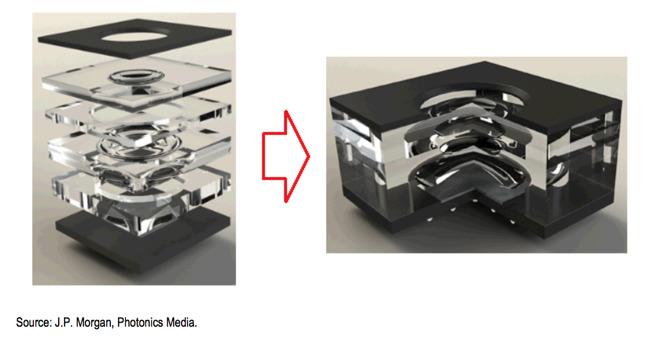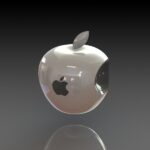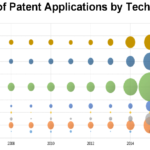

As Apple’s plans for breaking into the 3D industry continue to confound, small bits and pieces have been thrown out to tease us over the past few years. We’ve tried to imagine what an Apple 3D printer might look like, along with getting all excited about their in-house use of 3D printing and recent foray into virtual reality and continuing to speculate on their multiple patent applications, sifting through the details. We may have been looking in all the wrong places, however, while the most obvious route for Apple’s major entry into 3D technology is staring up at us from the palms of our hands.
It all makes perfect sense now though. The only question is, will it be the iPhone 7s, imbued with new features in a later release—or will we have to purchase the iPhone 8 for 3D laser capabilities? The word is that users will indeed be able to look forward to such new features. This is a prime benefit of Apple’s previous PrimeSense acquisition, giving them access to sensor capabilities that should blow the smartphone competition away for a while—until they figure out how to do it too.
The 3D sensor is expected to released in the iPhone 8, as Apple Insider reports of the latest news from Rod Hall at J.P. Morgan. And while more complex—and fun—capabilities may not be available for a while, the idea is that the sensor will replace the frustrating Touch ID sensor with facial scanning. Hall mentions that it would make just as much sense to see such technology in the 7s series later, along with the iPhone 8, which he refers to as a ‘high end’ model.
This may be quite a powerful display of how the PrimeSense acquisition is paying off. Apple bought the Israeli company for approximately $360 million in 2013, attracted by their talent in creating specialized sensors for both motion and scanning applications. PrimeSense was also behind much of the Microsoft Kinect sensor technology. Now, Hall believes Apple and PrimeSense together will have made improvements to the sensor with the following:

- A light emitter in the form of a LED or laser diode
- A light filter for a noise-free scan
- Speedy image sensor, combined with strong signal processor
“Creating small, inexpensive, 3D scanning modules has interesting application far beyond smartphones. Eventually we believe these sensors are likely to appear on auto-driving platforms as well as in many other use cases,” offered Hall. “Maybe a fridge that can tell what types of food you have stored in it isn’t as far off as you thought.”
And while many may wonder how that will increase the cost of the next phone, the answer is probably very little. While it may cost more overall (some projections peg it at over $1,000), most likely that won’t be due to this feature, which can be compared to LIDAR capabilities on the smartphone scale. Hall expects that the facial scanning capabilities would add about $10-$15 to the cost of each phone.
The iPhone’s 3D laser scanning will only be capable of working in a low-volume capacity, but further releases (many predicted for 2018 at the earliest) may allow for:
- Scanning for 3D printing purposes
- Internet of Things (IoT) capabilities
- Augmented reality (AR) and virtual reality (VR) applications
- Retail capabilities such as sizing for clothes
- Construction applications like measuring
“One obvious and potentially most compelling use would be AR/VR experiences in which the user’s hands and other real world objects are being scanned and integrated into a field of view provided by the iPhone mounted into a Google Daydream-like headset,” said Hall. “This would open up many interesting entertainment and gaming experiences not available today and might give Apple something extra in an AR/VR accessory compared to Google and others.”
Discuss in the iPhone 8 forum at 3DPB.com.
[Sources: Apple Insider, MacRumors]
If you're looking to get architectural 3D animation in the USA, our service provides an exceptional way to bring your architectural concepts to life through dynamic, immersive visuals. Through our platform, you can easily request high-quality 3D animations that showcase your designs in motion, offering a detailed view of your project from multiple angles and perspectives. Whether it's for a real estate development, a commercial building, or an urban planning project, our expert team ensures that every detail is captured in a visually compelling animation.
Through our website, you can seamlessly get architectural 3D animation tailored to your project’s specific needs. With our help, you can offer potential clients or investors an engaging experience that goes beyond static images. By integrating CGI animations with real-world settings, lighting, and textures, our team creates a lifelike experience that allows your audience to interact with your project as though it were already built. This service is perfect for presenting complex designs in a clear, visually attractive way that stands out in the competitive architectural market.




